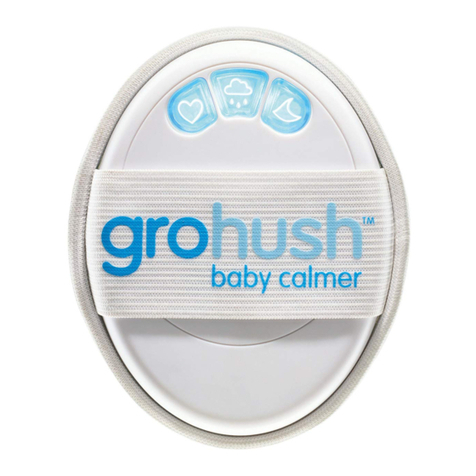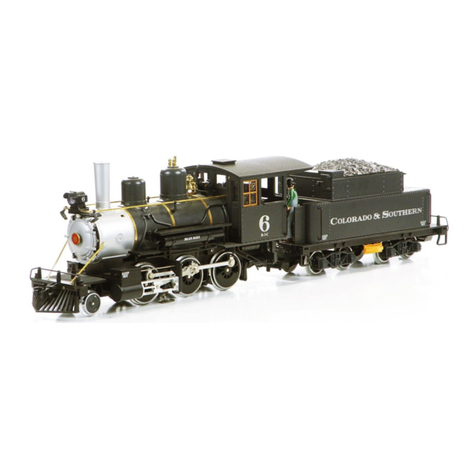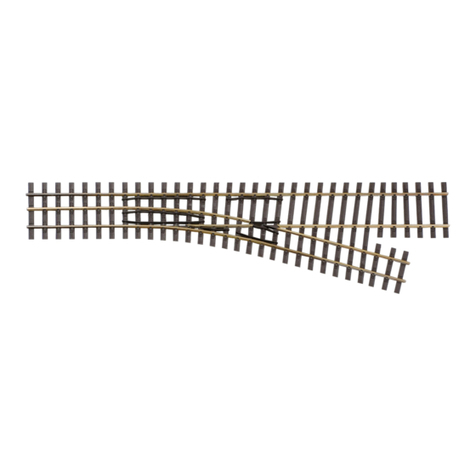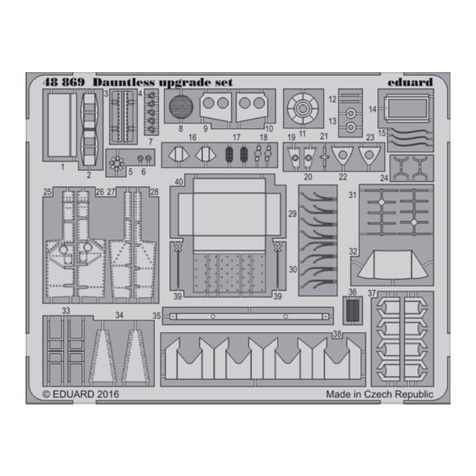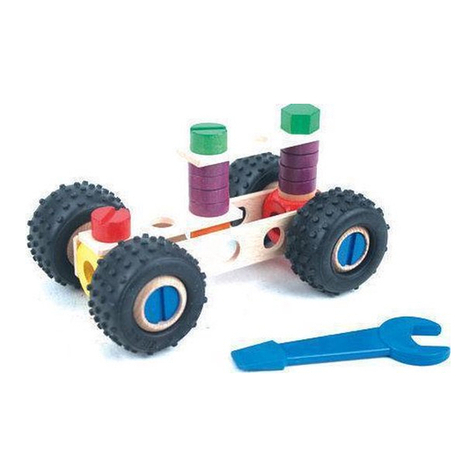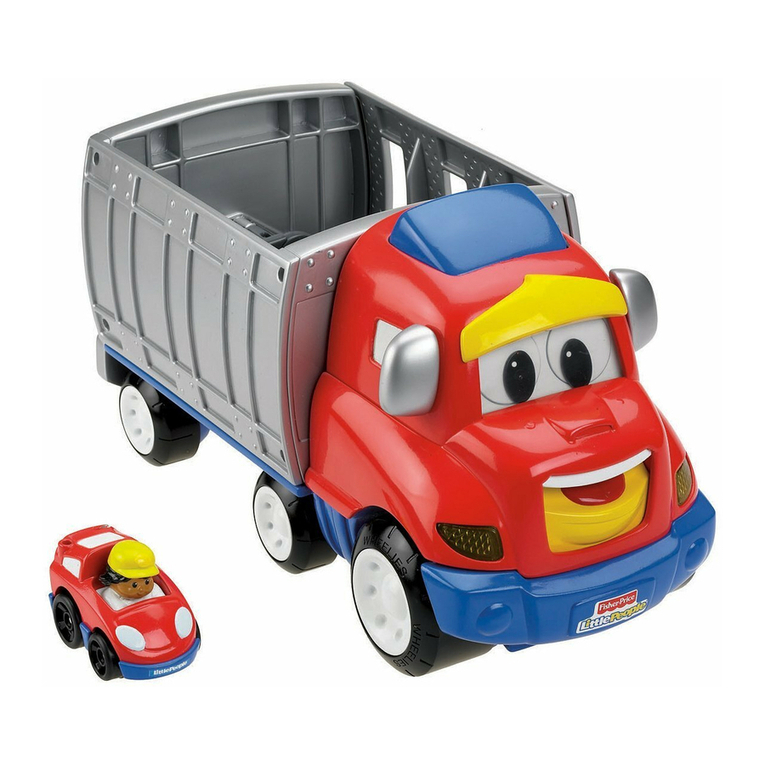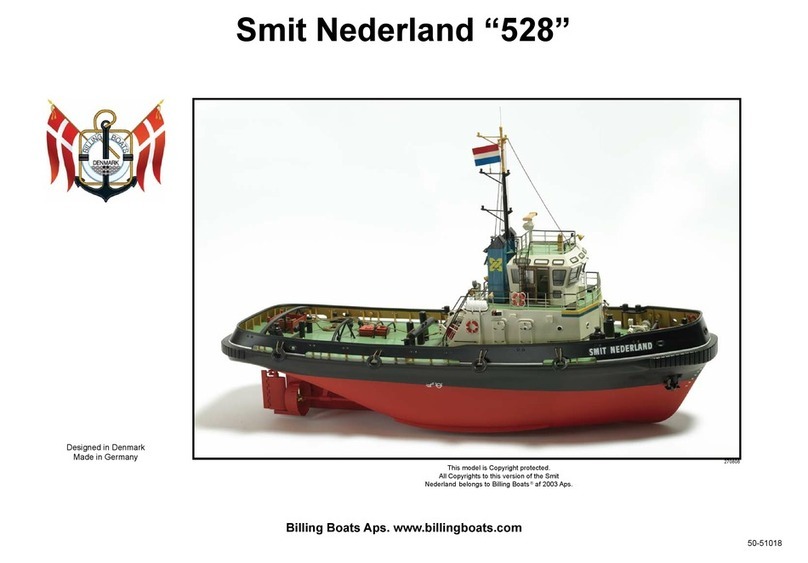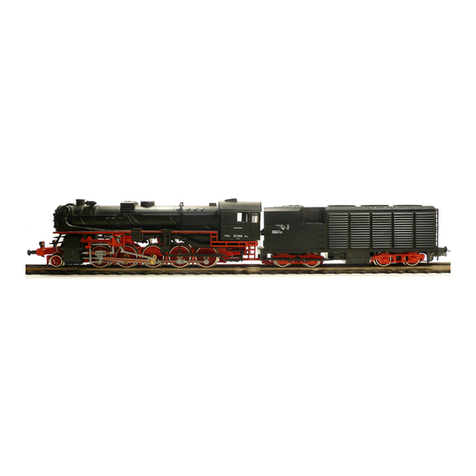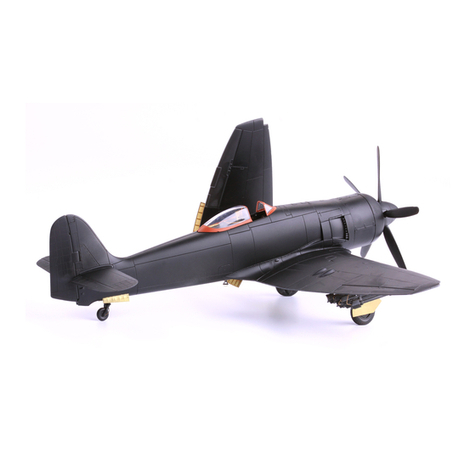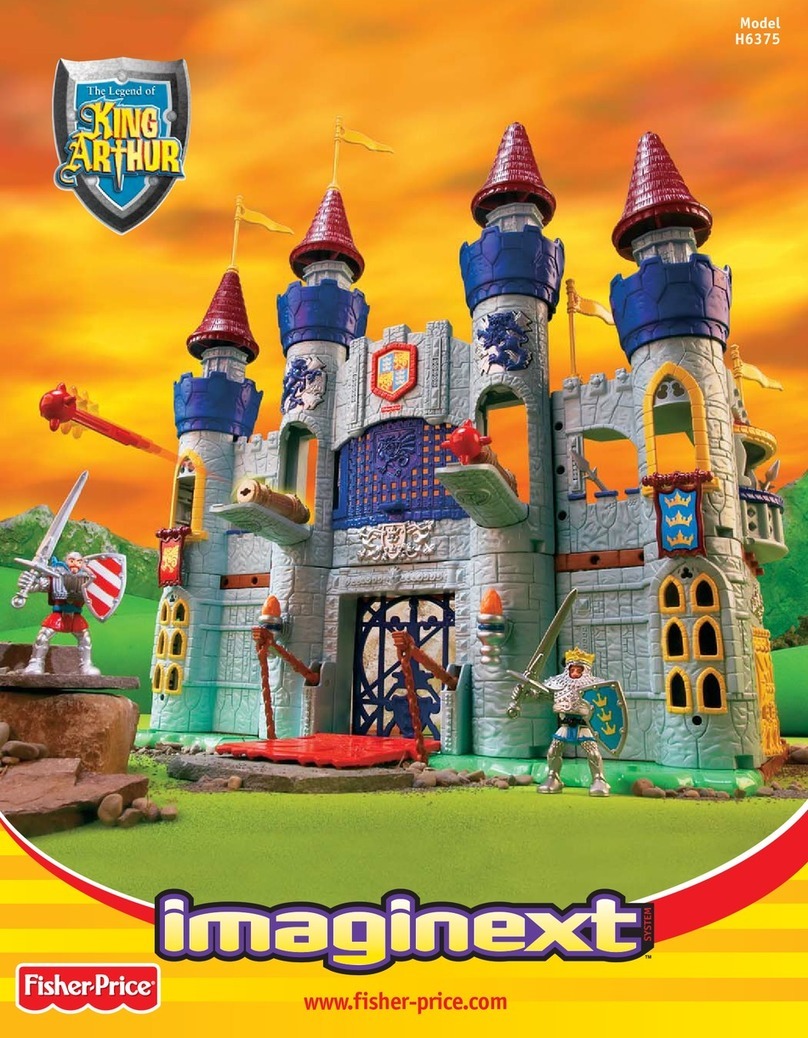KRILL AIRCRAFT LASER Z2300 Mk2 User manual

1
LASER Z2300 Mk2 39%
Assembly Guide
Dear customer,
thank you for choosing LASER Z2300 Mk2 39% model airplane.
Original kit Laser Z2300 was developed by our team for Freestyle flight. Kit has had great flying
characteristics, but not sufficient for top competitive flying. We decided to improve it‘s flying
characteristic and that’s why we created new version Mk2 built on strong base of current kit and test
it with our pilot Marek Plichta.
And what are the differencies?
At first, we made new bigger wings. Kit gets incredible flying agility also during harier manuvers..
Interier of the fuselage is also improved, holder of tanks which you can buy it with the plane and
already instaled rudder servo tray which you can extend with bearing arm. Holder of main landing
gear is also redesigned and for all control surfaces we used Gabriel horns.
The LASER Z2300 Mk2 kit is a full composite kit. Both wings and elevator should be easily
removed for transporting.
Content page
1. Technical data............................................................................................................................2
2. General informations.................................................................................................................2
3. Setting and setup.......................................................................................................................3
4. Recommended servos ...............................................................................................................4
5. Assembly...................................................................................................................................4
5.1 Empenage....................................................................................................................4
5.1.1 Rudder..........................................................................................................4
5.1.2 Horizontal stabilizator..................................................................................5
5.1.3 Elevator ........................................................................................................6
5.2 Wing assembly ............................................................................................................7
5.2.1 Servo install..................................................................................................7
5.2.2 Linkage.........................................................................................................8
5.3 Fuselage...................................................................................................................... 9
5.3.1 Rudder drive linkage .................................................................................. 9
5.3.2 Engine installation .....................................................................................10
5.3.3 Fuel & Smoke Tank installation................................................................11
5.3.4 Equipment installation................................................................................12
5.4 Landing gear..............................................................................................................12
5.4.1 Main landing gear.......................................................................................12
5.4.2 Tail wheel ...................................................................................................14
5.5 Cowling and Cooling ...............................................................................................15

2
1. Technical data:
Wingspan
2800 mm
Length
2662 mm
Weight (RTF)
17 - 18 kg
Wing area
132,5 dm2
Engine (Gas)
150-180ccm
Minimum RC channels
6
Number of servos
9 - 11
Notice: This Assembly guide only shows how the model could be assembled. According to
model specification we expect, that this airplane is assembled by experienced user, which will
use his habbits and skills to finish it.
As an accesories (levers, rods, fuel caps and fills, etc.) we recommend Secraft. Sets which you can
order as order number:
2051000-50 for Hitec servos
2051000-51 for Futaba servos
2051000-52 for JR servos.
Here is list of Secraft parts for linkage:
Servo arm D45 mm (for elevator)
2
Double servo arm Offset D90mm (for rudder)
1
Double servo arm D64mm (for rudder)
1
SEC Ball links M3 (10)
1
SEC M3 Push rod of ALU 60 mm
8
Servo arm D40 mm (for ailerons)
4
For rudder is higly recommended SECRAFT rudder pull-pull set BASE No.: 2050130-01
or SPORT set No.: 2010130-02
For throtlle servo is recommended SECRAFT servo holder S : 2050020
2. General informations
−all nuts should be secured against looseninig (use Loctite 243)
−make sure, that all control surfaces can move freely
−all holes drilled in airplane surfaces, that is not factory made, must be reinforced (with
rowing, plywood, etc.)
−protect your airplane against hot (it can cause material degradation). Please notice that dark
surface can heat up to 90°C/194°F in sunny summer days!!
−use protecting coats (you can order them with kit or separetely via [email protected]
email)
−please take into count that there are a lot of carbon fiber in your model, make sure that your
receiver has full signal

3
KRILL model takes no responsibility for damages incurred during the assemblying, flying,
using or transporting this model airplane.
3. Setting and set up
Setting –incidence and CG
Basic setup:
Ailerons deflection 20degrees, expo 50 –60%
Elevator deflection 30degrees, expo 50 –60%
Rudder deflection 30degrees, expo 50 –60%
Idle 1 for 3D:
Ailerons deflection 35degrees, expo 60 –70%
Elevator deflection 40degrees, expo 60 –70%
Rudder deflection 40degrees, expo 60 –70%
Idle 2 for 3D:
Ailerons deflection 42 –45 degreess, expo 70 –80%
Elevator deflection 60degrees –full, expo 70 –80%
Rudder deflection 50degrees –full, expo 70 –80%
4. Recommended servos:
You can use any strong and fast servos in standard size.
Recommended torque: min 35 kg/cm
Recommended speed: 0,08 –0,11 s5.

4
5. Assembly
5.1 Empenage
5.1.1 Rudder
Gabriel horns 6/20
It´s so simple just glue the horns into the prepared holes using an epoxy resin.
5.1.2 Horizontal stabilizator
Two operation for horizontal stabilizators is needed. First is to place the servo and drill the hole for
servo lever. Make sure that lever has enought space for full movement. Otherwise the lever can
damage stabilizator surface!

5
Second operation is to secure horizontal stabilizator against motion. This can be done two ways.
First is to drill hole, which goes throught surface and carbon fiber tube (stabilizator spar). And
place a pin (or screw) into this hole. This operation has to be done on both halfs!
5.1.3 Elevator
Use Gabriel horns 6/27 size from accessories. Glue it to predrilled holes on both elevators.
For linkage use Secraft turnbuckle ALU pushrod 60 mm long, from one side is mounted Secraft ball
link M3, from second original Gabriel ball link, overall lenght of the link is 80 mm. 45 mm ALU
Secraft V2 servo arms is used there.

6
5.2 Wing
5.2.1 Servo instal
First step is put the servos to the prepared holes and fix it with screws. Second step is stretch the
cable (ONE4TWO) through the prepared holes in the wing and connect it to the servos. Then you
should fix the MPX connector to the 3D printed holder and fix the holder into the prepared hole.
Next step is to drill holes for servo arms, there is a small hole in the right position for this size of
servos. You should just make this small hole bigger enough for your arm.
One of the last steps is to glue the Gabriel horns into the prepared holes in the ailerons.

7
5.2.2 Linkage
Glue the supplied Gabriel horns size 6/27 into the prepared pair of holes with epoxy resin. Servo
arm is connected with the Gabriel horn using a linkage made of a 60 mm long pushrod, terminated
on one side by an original ball link from Gabriel horn and on the other side by a Secraft ball link.

8
5.3 Fuselage
The installation of the internal equipment of the fuselage of the model is very individual, it depends
on the habits of the builder, but especially on the equipment used, consider the following lines as
informative, what the internal installation of the fuselage may look like.
The model comes standard with a number of accessories that you can use:
- Battery holders
5.3.1 Rudder drive linkage
We recommend to use 2 standard servos mounted in the already glued deck to drive the rudder. The
rear (end servo) is equipped Secraft double sided offset arm 90 mm, the front servo is equipped with
a Secraft double side straightde arm 64 mm, the arms are interconnected by linkages formed by ball
links Secraft and pushrods 70 mm. Than the drive itself is solved by a pull-pull drive using a
Secraft Rudder pull-pull set BASE or SPORT.

9
5.3.2 Engine installation
The MVVS 175NP engine was used for the model prototype shown. You can use any engine
(2-cylinder boxer) size about 150-180 ccm. The engine is mounted offset to the right 2.5 degrees,
horizontally at zero. It will probably always be necessary to mount the engine using spacers of
suitable length so that prop hub plane is about 2-3 mm in front of the engine cover plane and
respects the engine misalignment, on the engine axis at the prop hub level intersects the vertical
axis of the model fuselage.
Silencers of any type can be placed on the engine, as often of the cup type, which are standardly
supplied with some engines (DLE, etc.), but better, due to the noise limits, by the silencer with
headers.
You can use the supplied 70 mm diameter muffler exhaust holder for this exhaust system.
The servo to control the carburetor should be placed under the engine using the Secraft side servo
mount - see the picture.
Place the engine ignition on the side sloping wall of the firewall.

10
5.3.3 Fuel & Smoke Tank installation
To install fuel and smoking tanks, you can use the standard delivered holder designed for use with
Secraft square tanks - SE Fuel tank 1000 ml. The picture below shows an installation example. The
tanks are attached to the holder with velcro

11
5.3.4 Equipment installation
No deck is instaled in the fuselage but it´s already prepared for one which you can use to mount
your electronic system. For batteries (typically 2x RX batteries and 1x ignition batteries) you should
use the standard delivered battery holders.
The pictures below then represent a possible solution for the installation of on-board electronics,
here a model equipped with JETI models electronics.
5.4. Landing gear
5.4.1 Main landing gear
Every kit is delivered with full accessories to instal main
landing gear, except wheels. This item should be ordered
as optional. We highly recommend using the offered
SLH Wheels 100mm on ALU disc with ball bearings.
The legs of the landing gears are delivered already drilled with the fuselage of the model. All you
have to do is install the wheel axles and fit them with wheel covers.
First, make sure that the wheels you plan to use pass through the holes in the wheel cover. If not,
you can slightly enlarge the holes.

12
The chassis leg and the wheel cover fit together exactly at the point of contact. First, drill the holes
for the axles in both undercarriage legs as shown.
Make a notch in the wheel cover to slide the cover onto the axle.
When installing, first install the wheel with the axle on the chassis leg and then slide on the wheel
cover before final tightening.
The last operation is to put on the cover of the landing gear leg, the cover should be fixed to the
fuselage with a strip of transparent adhesive tape.

13
5.4.2 Tail wheel assembly
We recommend using our tail wheel 2010300-81 Tail wheel 35% with leg of C / F V2 for the model.
Attach the tail wheel to the tail of the fuselage on a designated area, which is reinforced inside with
plywood. There are 2 M4 nuts fixed in the plywood you can just use 2 pieces of M4x20 screws to
mount tail wheel.
Drill 4 mm diameter holes into the CF leg of tail wheel as shown.
Notice:
It is not necessary for the tail wheel to be controlled by the rudder linkage, you can leave them free.
It's simple and just as functional as a controlled tail wheel.

14
5.5 Cowling and cooling
The engine cover (Cowling) is delivered in the kit as it is removed from the mold after production.
The engine cover is only folded with the fuselage and there are holes for connecting screws to the
fuselage.
The picture shows which holes should be made. There are additional holes in the bottom of the
engine cover for engine cooling and better air access to the carburetor. Thus, the engine cover was
a modification for the used engine MVVS175NP.
Krill.B.P. spol. s r.o. (Inc.)
Na Zahonech 1699
686 04 Kunovice
Czech Republic
+420 572 581 895
www.krill-model.com
All rights reserved. Product can be changed without notification. All pictures are only illustrative.
Table of contents
Popular Toy manuals by other brands
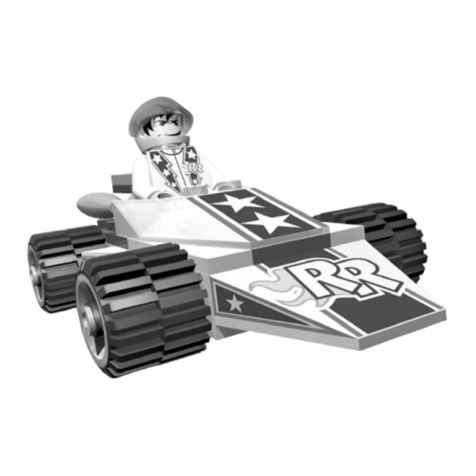
LEGO
LEGO RACERS2 instruction manual
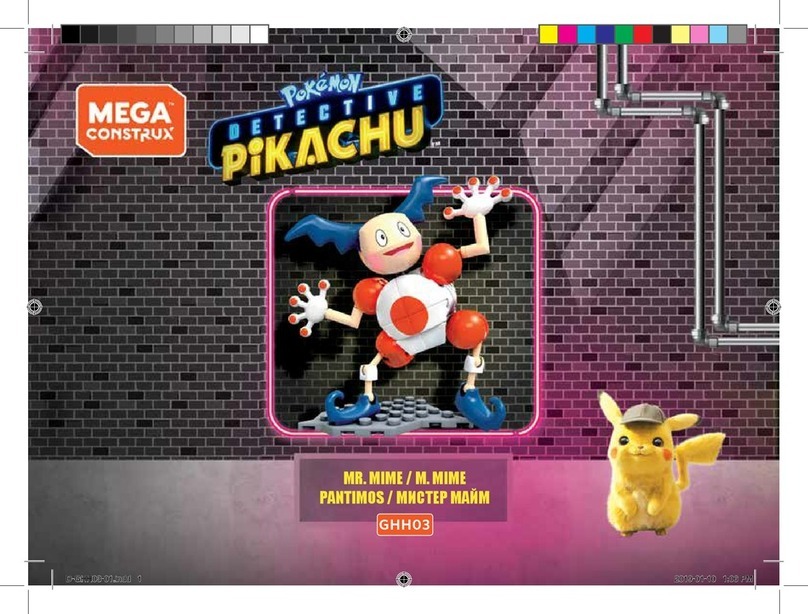
Mega Construx
Mega Construx Pokemon Detective Pikachu Mr. Mime manual

Hasbro
Hasbro Bumblebee Allspark Blaster 83539 instructions
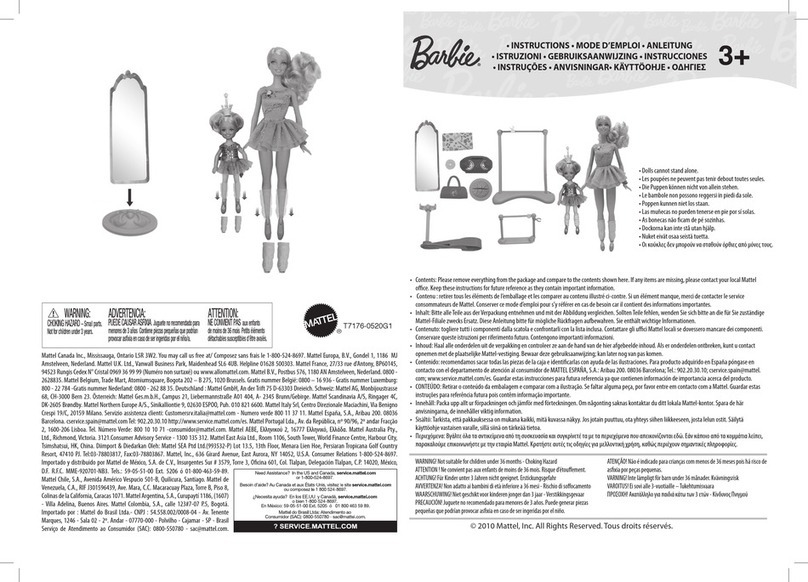
Mattel
Mattel Barbie T7176 instructions
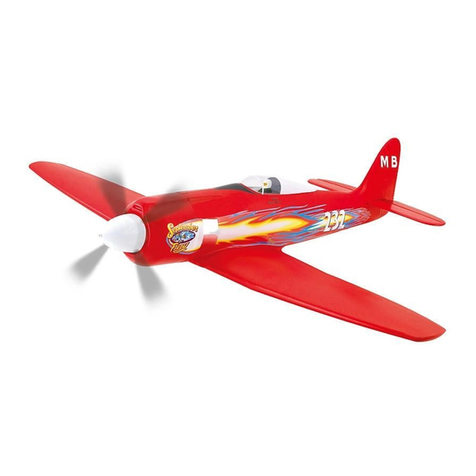
THUNDER TIGER
THUNDER TIGER Sept. Fury Unlimited Pylon Racer Assembly manual
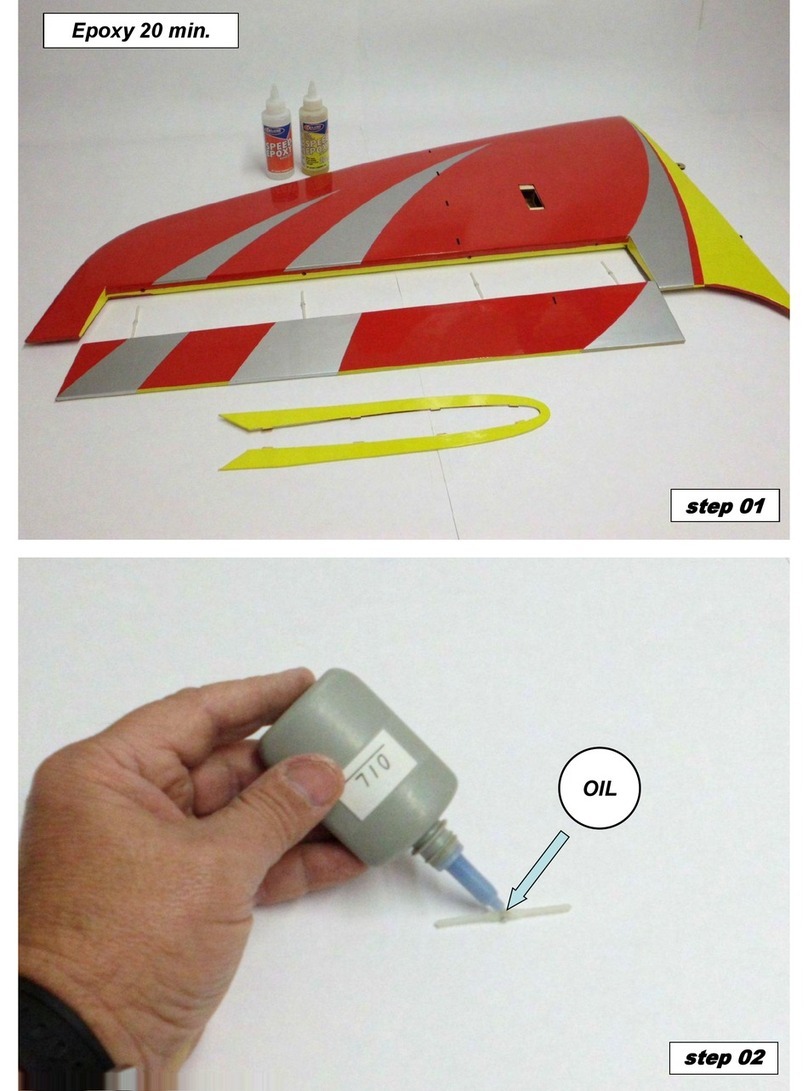
Hacker Motor
Hacker Motor Mythos 125E Assembly manual
